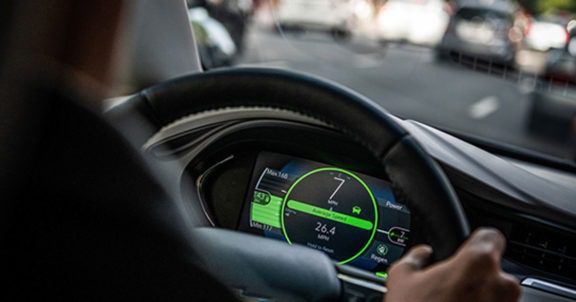Back to all Blog Posts
Blog Post
Driver Education Tips for Electric Vehicle Fleets
By Dan Belknap
September 9, 2019

When you finalize your electric vehicle (EV) selector, you’ll likely already know the ins and outs of this new-ish vehicle type. However, your drivers may be new to the EV scene. If so, take care to show them the ropes of what they need to know to be a successful EV operator.
What Fleet Drivers Need To Know Before They Drive An EV
Charging an EV
- Know the charging energy standards – It’s rated in power output, which is a kW. Batteries are measured in energy capacity, which is kWh.
- Gauge the differences in levels – There are three charging levels. Level 1 charging offers about 8 km (5 miles) of driving range per hour. Level 2 charging offers 30 km (18 miles) of range per hour. Level 3 or DC fast charging can charge 80% full in 30 minutes.
- Learn how to find a station – Find a charging station with maps that offer aggregated information for options across North America, such as PlugShare and ChargeHub.
EV Battery Care
- Avoid overcharging – A fast charger has great range, but it should only be used when necessary. Powering your battery quickly and fully can put undue stress and limit its lifecycle. Only use a fast charger, when you need to travel long distances without charging stations in between.
- Don’t empty your battery – Always leave a bit of energy reserve in your battery—around 20%. It’s sometimes difficult to charge from pure zero.
- Take precaution in extreme temps – EVs behave differently in extreme weather, hot or cold. So, understand that your range may decrease since the power you’re using to condition the cabin is generated by the battery.
- Extend the battery life – Many EVs contain batteries that are designed to last the life of the vehicle so with care you shouldn’t have to replace the battery.
Driving an EV
- Rapid acceleration – With a typical gas-powered engine it takes several revs before it reaches maximum torque. Whereas with an EV you can accelerate to the max from a stop.
- Regenerative braking – When an EV brakes smoothly regenerative braking comes into play. Kinetic energy from the process is sent back to the battery. However, this doesn’t occur during harsh driving behaviors making it more advantageous to drive safely on the road.
- Silent ride – With the no-noise electric motor, drivers’ rides will be much quieter. Bad news: pedestrians can’t hear these vehicles approaching, making it much more important to drive mindfully. The U.S. is requiring vehicles to emit noises when operating at low speeds. And in early 2018, Canada was requesting comments for a proposed similar legislation.
EV Planning and Tools
- Precondition the vehicle – Warming up the vehicle in hot or cold temps is still advised in an electric vehicle. Yet it’s called preconditioning, since you’ll do so while it’s charged as to not pull energy from your battery stores. Instead, it will take the power from the outlet.
- Use the tools available – Pay attention to the onboard system and mobile app that accompany the vehicle, they offer useful information to help you drive more efficiently, like km or miles traveled and energy used.
- Mapping out your trip – Take a few minutes to plan your trip ahead of time. Understand where you’re going, chart your route and scout out stations in the vicinity. Often, you can charge while you hold a meeting or answer a service call. All you need is a bit of planning to meet your needs.
- These tips apply to battery-electric vehicles and plug-in electric vehicles. And while the internal combustion engine will kick in after you deplete your energy stores with a plugin hybrid, it’s recommended to utilize the electric motor as much as possible. Save gasoline for emergencies.
Join the conversation. Email me at [email protected].